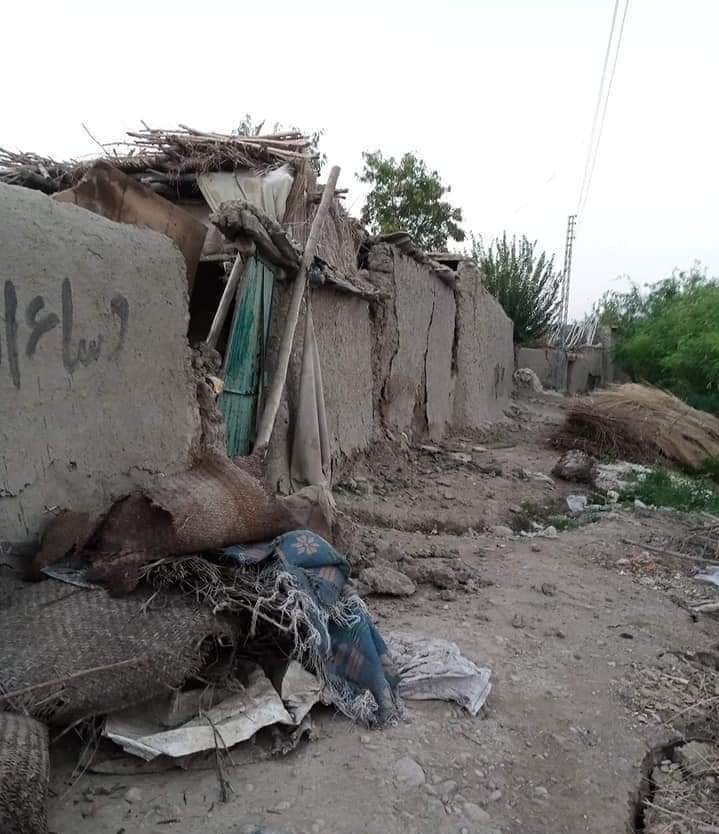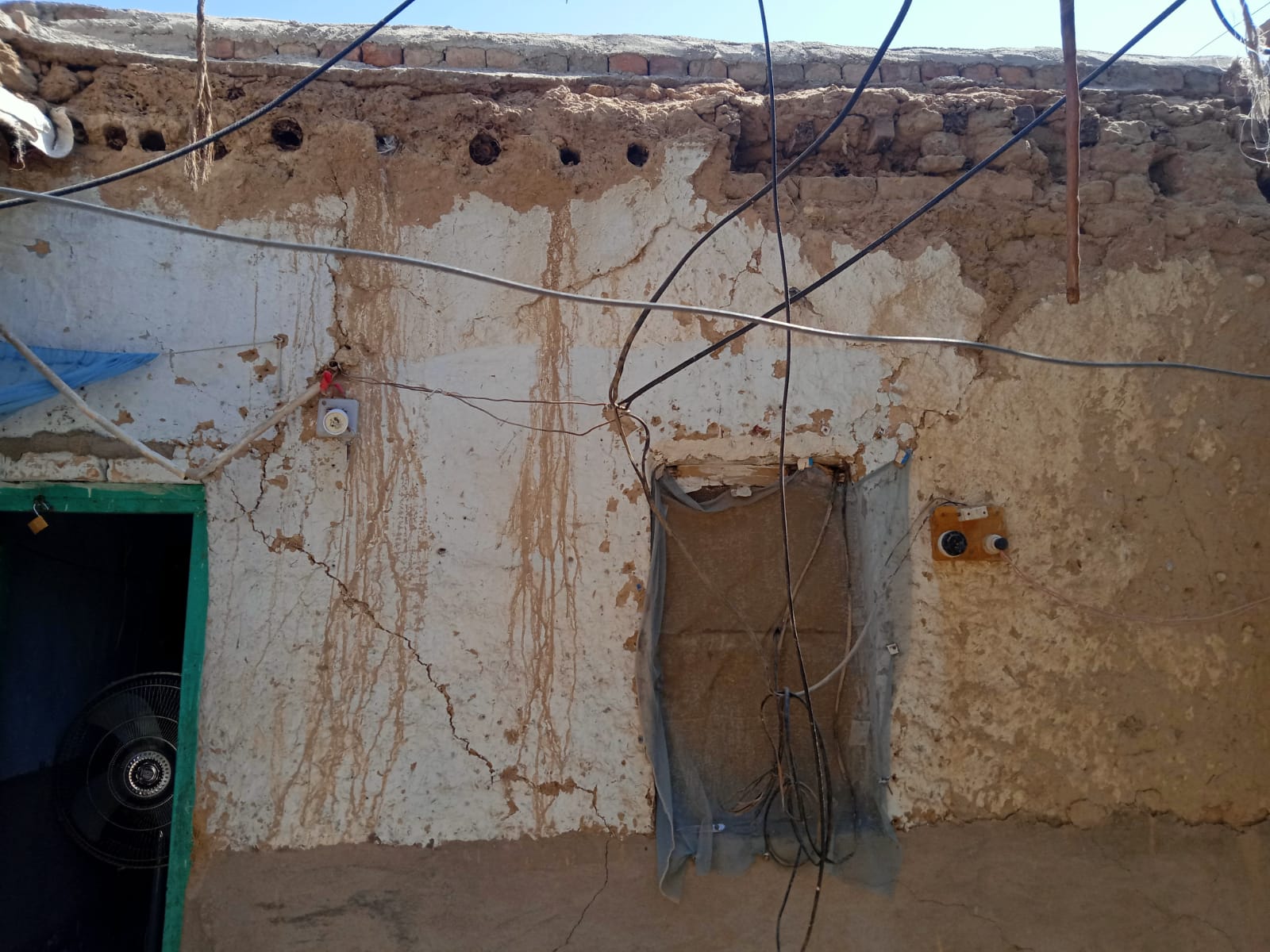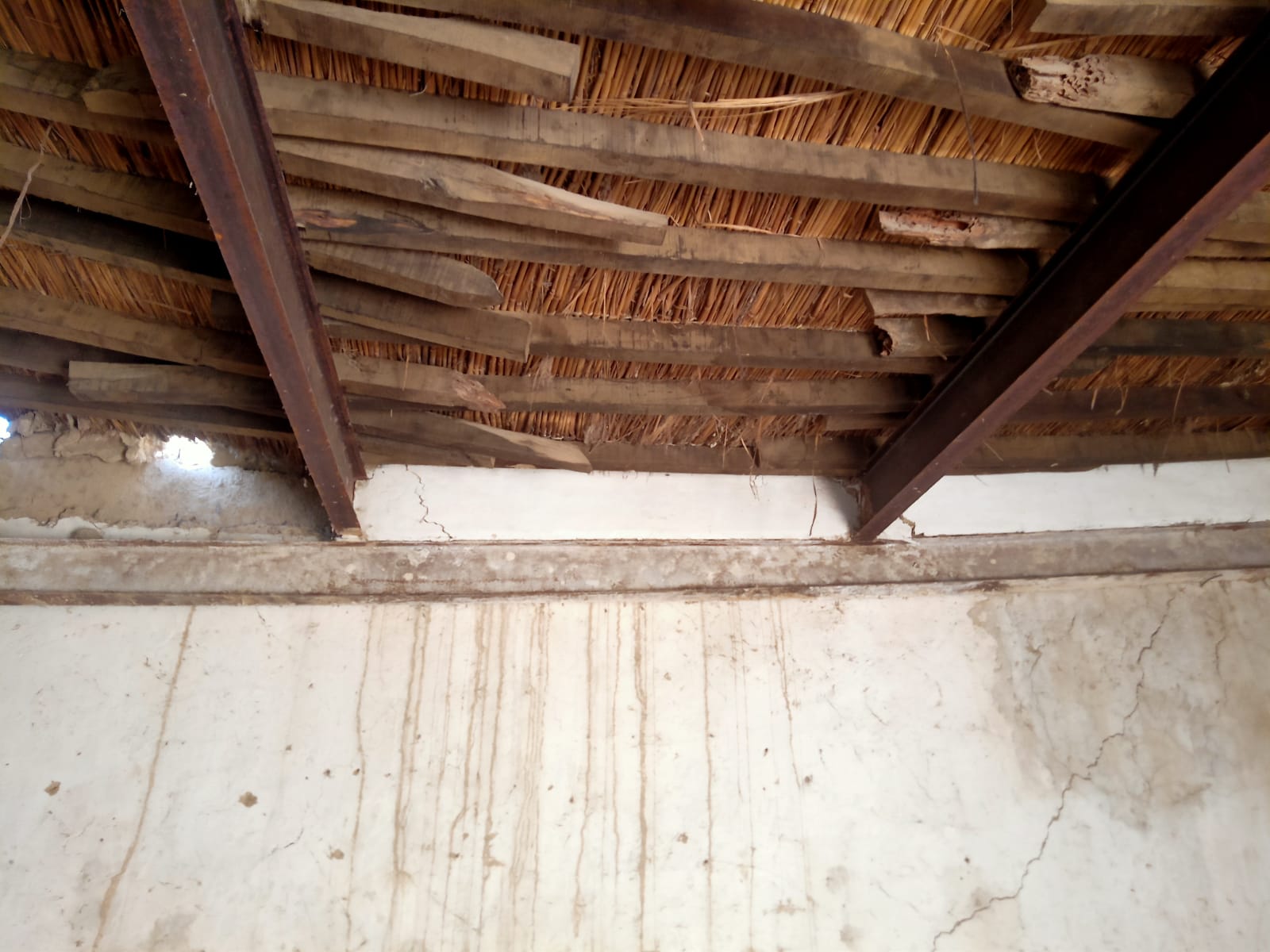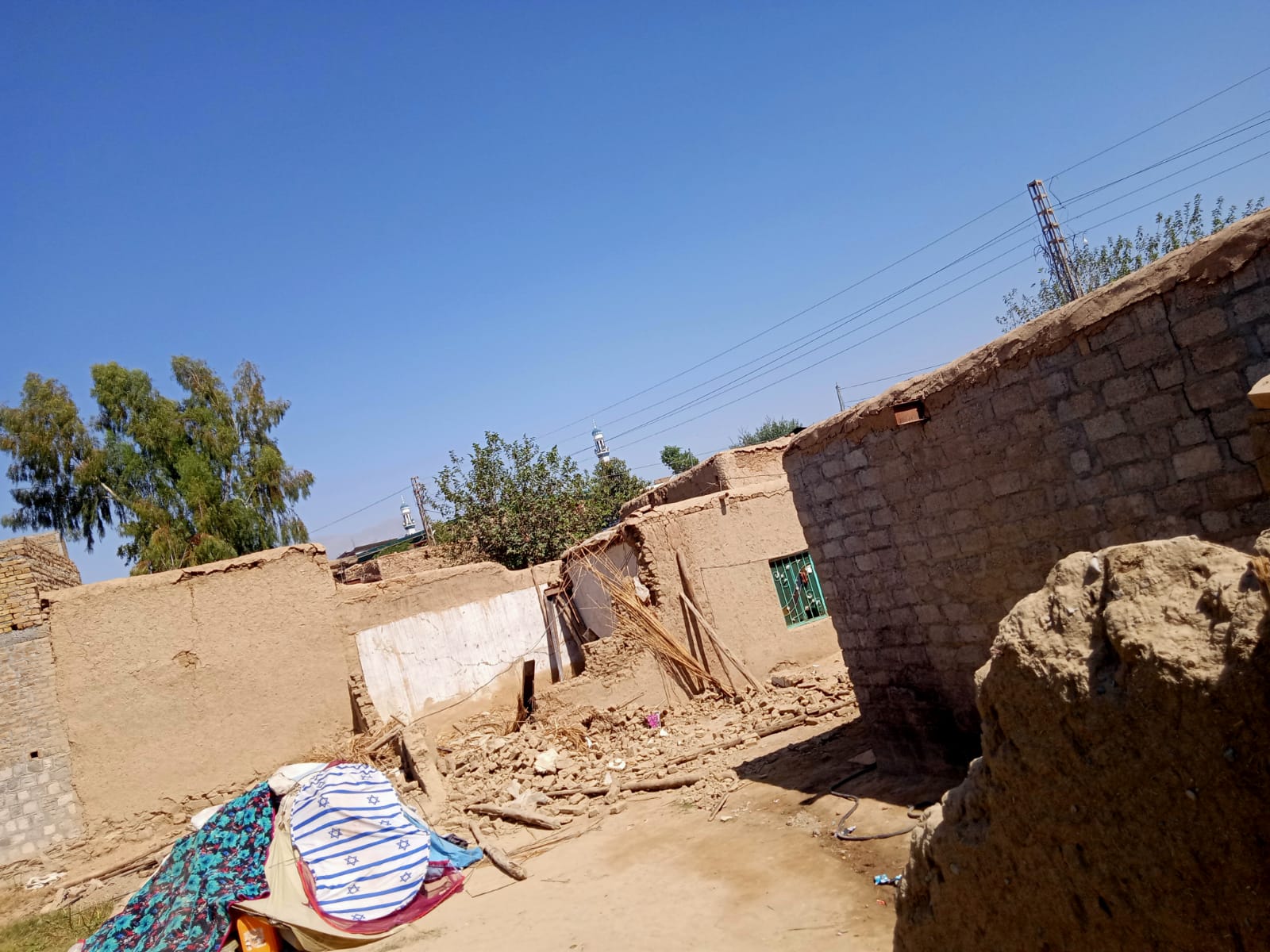
The entry gates of the hospitals are stormed by people. That is when the security at the gates of Sandman Civil Hospital Quetta's Trauma Center realises something out of the ordinary has happened – as wounded people, children and women are transferred from here to different wards for treatment.
In the Orthopedic Ward, 8 beds are covered by wounded people in Thursday's deadly earthquake in Harnai district, some 170 km from the capital city of the Balochistan province. Most of them are unable to even speak, because they are in deep trauma and shock.
The earthquake on Thursday night jolted Pakistan's southwestern province Balochistan: affecting particularly Harnai, Quetta, Chaman, Ziarat, Killa Abdullah, Zhob, Sibbi and Pishin. It struck at 3:01 am when many people were fast asleep. As per the report of the European Mediterranean Seismological Center, the earthquake in Balochistan was 5.9 magnitude on the Richter scale, originating some 10 km under the ground, and the epicentre was 18 km from district Harnai.
Sher Shah lost his two-year-old son in the Harnai earthquake while he himself and his wife were admitted in the Sandman Hospital for treatment, as they are among the seriously wounded. Sher Shah could not talk but only gestured to his cousin Mazroof Shah, who is the attendant at his bedside. The cousin tells us: “At 3 o'clock midnight I felt as if an electricity short-circuit had caused a fire, but when we went out we felt it is an earthquake. Our home was safe but I ran away to ask about our cousin Sher Shah's family. when we reached we found him, his wife and his child under the debris.”
“We took them out of the debris, but felt his two years old son was not alive, and made arrangements for Sher Shah and his wounded wife. We shifted them to the hospital. We brought them to Quetta on an ambulance, and owing to the poor condition of the road, it took more than 4 hours,” says Mazroof Shah, 32.
Another victim is Niamatullah, 35, from the Zarmana Parhi region. He is wounded and now on a hospital bed. In a dark black suit with the various coloured hospital lights playing in dots on his clothes, Niamatullah, a painter by profession, has his limb covered in white bandages. He had reached home at 1:30 am midnight, from yet another day of hard work. His family was already asleep, so he had decided to sleep in the lawn beside the wall, as his charpai was set beside a wall.
“I did not know at first, but when I came to my senses, I felt the blocks of the wall were piled on me. I couldn't breath, though, I tried to keep my eyes open but couldn't do it,” he recalls.
While Niamat speaks, a doctor beside him is noting down his medical history. “The patient is in trauma,” she murmurs.
The debris fell upon 6 members of Niamatullah's family, “When the people came for help, he was the first to be removed from under the debris of the wall that fell upon him,” says Niamat. When he saw the situation on being extricated from the rubble, he again lost consciousness and was later shifted to the local District Hospital in Harnai.
Niamat's brother Abdullah says, “In about three hours, his brother was shifted to Combined Military Hospital Quetta by helicopter and later shifted to Sandman Hospital.”
The rest of the family had lesser injuries and after initial treatment were treated and sent back home. But his daughter Benazir, 10, is admitted beside him on the next bed: she has shoulder injuries. She is unable to talk because of deep trauma. She just says, “I am well.”
"The earthquake, injuries and incidents cause Post Traumatic Stress, the impact of such a situation remains for months, or it starts months later,” says Fauzia Bangash, a senior psychology practitioner. “Psychiatric treatment of such wounded is needed, because they are faced by the memories of the incident and they cannot sleep well.”
In some cases of post-traumatic stress, the wounded people seem to be fine but later they are faced by the psychological disorders.
***
Harnai, being almost at the epicentre, was particularly hard hit.
“All assistance and evacuations are underway for the Harnai earthquake, medical, local administration and disaster management teams are on high alert and mobilised, blood ambulances emergency assistance, heli[copter] and all other arrangements are made,” Jam Kamal Khan, the chief minister of Balochistan tweeted soon after the Harnai earthquake.
“The majority of the wounded have chest, spine and head injuries, and were traumatized. We treated them in general surgery, passed their samples in test tubes and kept the orthopedic operations going on,” says Dr. Yasir Achakzai, who was part of the medical care of the earthquake victims at Quetta. “We have sent our Young Doctors Association team to treat the minor injured in the Harnai district on emergency basis.”
The Harnai district headquarter hospital has no facilities, confirmed Dr. Yasir Achakzai via a phone call to The Friday Times. “An MRI machine is not available in Quetta’s tertiary Sandman Civil Hospital, and the CT scan machines are not functional, which cause hurdles in treating such high numbers of wounded in such natural disasters.”
Harnai is one of the mineral-rich districts well known for its coal mines that supply the country. Here, the monsoon rainy seasons make agriculture possible. People from here get their income most through agriculture, growing vegetables and grains. A majority of the population here are poor and live in mud houses scattered around villages.
As per a statement of Provincial Disaster Management Authority, 16 people (8 of them children) have died so far while 219 were wounded – a majority of them children. These statistics were confirmed in a call to the provincial interior minister Mir Zia Langove.
***
Balochistan is Pakistan's largest province. It makes up 43 percent of the country's geography while being less populated than any of the other three provinces 12 million people live here as per the 2017 census. The mountains across the province make it part of different seismic plates and cause earthquakes at various intervals of time. Here minerals like gold, copper, marbles, chromites, coal and methane gas are to be found, but the population scattered in rural regions live in poverty and malnutrition.
The locals are faced by a sparse network of healthcare, education and development services. A 170 km road was the only option for the people to shift the wounded to medical care, and some of them were evacuated by the National Disaster Management Authority's (NDMA) helicopters.
A local told The Friday Times that the district Hospital in Harnai had only two on-duty doctors who could not tackle the high number of patients for treatment.
Activist Mehmood Tareen, who is busy in aid work for the victims of the earthquake in Harnai says, "Initial medical aid was provided to the people and those whose homes collapsed are trying to get alternate shelters. But in the meanwhile people are faced by the mosquitoes as they are sleeping in the open air. Mosquito nets are particularly needed."
The Sandman Provincial Tertiary Hospital is the only one with a trauma centre here. Dr. Arsalan, a serving professional from the Young Doctors Association says that the centre is struggling to keep up with the flow of patients due to a lack of equipment and systems in place. "Owing to the rush, we kept some wounded waiting," he says.
"The National Disaster Management Authority's helicopters reached Harnai district within an hour, as well as the ambulance services. 20 people who were seriously wounded were evacuated through helicopters", emphasises provincial interior minister Zia Langove.
***
A deadly earthquake destroyed 90 percent of Quetta city in 1935 during the British Colonia era, measuring 7.6 magnitude on the Richter scale. 35,000 people lost their lives back then, at a time when the city had 70,000 people in all.
High death tolls in earthquakes are caused by the unplanned constructions, as well as lack of concrete and metallic frameworks for buildings. "The same had happened in 1935," says Professor Din Muhammad Kakar. He is former Dean of the Earth Sciences Faculty at the University of Balochistan. "The land is divided in 25 small and larger plates globally. These plates pushing against each other cause 'fault lines. These fault lines store energy and when the same energy is released, we see earthquakes take place."
He continues:
"One of the fault linea starts from Kabul and comea to Chaman in Pakistan. It then goes straight through Gwadar and enters the Arabian sea," says Professor Din Muhammad. "Regions located on or around these fault-lines are always on high alert - or we can call them earthquake zones. So strict building codes in these regions should be applied and material quality should be checked by the government. Higher buildings in such regions should not get approved because they can contribute to a loss of life in case of disasters."
He further adds:
"I had predicted the Harnai earthquake in 2011 research, because the Kafthar mountain and Chiltan mountain fault lines had stored energies, and exactly ten years later it happened," says Dr Din Muhammad. He emphasises that there is no way to stop earthquakes from happening, but much can be done to reduce casualties.
***
Balochistan National Party (BNP) leader Ghulam Nabi Marri is of the view that the hospitals across the province are in poor condition and with a general lack of facilities available, poor communication and roads are hurdles to evacuation. "The government is neglecting the building codes, or simply incapable of enforcing them. One can see multiple-storey building with a high number of people living inside them. These can at any time become a disaster if something like the 1935 earthquake takes place."
Survivor Gul Muhammad says, "After the earthquake, when I went out of the room, our verandah - a sheltered space in front of the rooms, had come down and changed into debris. We took the sleeping family members out of the debris. We are lucky that in the case of our family, we lost nobody, but only suffered injuries."
Not all, however, were so lucky in Harnai.
In the Orthopedic Ward, 8 beds are covered by wounded people in Thursday's deadly earthquake in Harnai district, some 170 km from the capital city of the Balochistan province. Most of them are unable to even speak, because they are in deep trauma and shock.
The earthquake on Thursday night jolted Pakistan's southwestern province Balochistan: affecting particularly Harnai, Quetta, Chaman, Ziarat, Killa Abdullah, Zhob, Sibbi and Pishin. It struck at 3:01 am when many people were fast asleep. As per the report of the European Mediterranean Seismological Center, the earthquake in Balochistan was 5.9 magnitude on the Richter scale, originating some 10 km under the ground, and the epicentre was 18 km from district Harnai.
Sher Shah lost his two-year-old son in the Harnai earthquake while he himself and his wife were admitted in the Sandman Hospital for treatment, as they are among the seriously wounded. Sher Shah could not talk but only gestured to his cousin Mazroof Shah, who is the attendant at his bedside. The cousin tells us: “At 3 o'clock midnight I felt as if an electricity short-circuit had caused a fire, but when we went out we felt it is an earthquake. Our home was safe but I ran away to ask about our cousin Sher Shah's family. when we reached we found him, his wife and his child under the debris.”

“We took them out of the debris, but felt his two years old son was not alive, and made arrangements for Sher Shah and his wounded wife. We shifted them to the hospital. We brought them to Quetta on an ambulance, and owing to the poor condition of the road, it took more than 4 hours,” says Mazroof Shah, 32.
Another victim is Niamatullah, 35, from the Zarmana Parhi region. He is wounded and now on a hospital bed. In a dark black suit with the various coloured hospital lights playing in dots on his clothes, Niamatullah, a painter by profession, has his limb covered in white bandages. He had reached home at 1:30 am midnight, from yet another day of hard work. His family was already asleep, so he had decided to sleep in the lawn beside the wall, as his charpai was set beside a wall.
“I did not know at first, but when I came to my senses, I felt the blocks of the wall were piled on me. I couldn't breath, though, I tried to keep my eyes open but couldn't do it,” he recalls.
While Niamat speaks, a doctor beside him is noting down his medical history. “The patient is in trauma,” she murmurs.
The debris fell upon 6 members of Niamatullah's family, “When the people came for help, he was the first to be removed from under the debris of the wall that fell upon him,” says Niamat. When he saw the situation on being extricated from the rubble, he again lost consciousness and was later shifted to the local District Hospital in Harnai.
Niamat's brother Abdullah says, “In about three hours, his brother was shifted to Combined Military Hospital Quetta by helicopter and later shifted to Sandman Hospital.”
The rest of the family had lesser injuries and after initial treatment were treated and sent back home. But his daughter Benazir, 10, is admitted beside him on the next bed: she has shoulder injuries. She is unable to talk because of deep trauma. She just says, “I am well.”
"The earthquake, injuries and incidents cause Post Traumatic Stress, the impact of such a situation remains for months, or it starts months later,” says Fauzia Bangash, a senior psychology practitioner. “Psychiatric treatment of such wounded is needed, because they are faced by the memories of the incident and they cannot sleep well.”
In some cases of post-traumatic stress, the wounded people seem to be fine but later they are faced by the psychological disorders.
***
Harnai, being almost at the epicentre, was particularly hard hit.

“All assistance and evacuations are underway for the Harnai earthquake, medical, local administration and disaster management teams are on high alert and mobilised, blood ambulances emergency assistance, heli[copter] and all other arrangements are made,” Jam Kamal Khan, the chief minister of Balochistan tweeted soon after the Harnai earthquake.
“The majority of the wounded have chest, spine and head injuries, and were traumatized. We treated them in general surgery, passed their samples in test tubes and kept the orthopedic operations going on,” says Dr. Yasir Achakzai, who was part of the medical care of the earthquake victims at Quetta. “We have sent our Young Doctors Association team to treat the minor injured in the Harnai district on emergency basis.”
The Harnai district headquarter hospital has no facilities, confirmed Dr. Yasir Achakzai via a phone call to The Friday Times. “An MRI machine is not available in Quetta’s tertiary Sandman Civil Hospital, and the CT scan machines are not functional, which cause hurdles in treating such high numbers of wounded in such natural disasters.”
Harnai is one of the mineral-rich districts well known for its coal mines that supply the country. Here, the monsoon rainy seasons make agriculture possible. People from here get their income most through agriculture, growing vegetables and grains. A majority of the population here are poor and live in mud houses scattered around villages.
As per a statement of Provincial Disaster Management Authority, 16 people (8 of them children) have died so far while 219 were wounded – a majority of them children. These statistics were confirmed in a call to the provincial interior minister Mir Zia Langove.
***
Balochistan is Pakistan's largest province. It makes up 43 percent of the country's geography while being less populated than any of the other three provinces 12 million people live here as per the 2017 census. The mountains across the province make it part of different seismic plates and cause earthquakes at various intervals of time. Here minerals like gold, copper, marbles, chromites, coal and methane gas are to be found, but the population scattered in rural regions live in poverty and malnutrition.

The locals are faced by a sparse network of healthcare, education and development services. A 170 km road was the only option for the people to shift the wounded to medical care, and some of them were evacuated by the National Disaster Management Authority's (NDMA) helicopters.
A local told The Friday Times that the district Hospital in Harnai had only two on-duty doctors who could not tackle the high number of patients for treatment.
Activist Mehmood Tareen, who is busy in aid work for the victims of the earthquake in Harnai says, "Initial medical aid was provided to the people and those whose homes collapsed are trying to get alternate shelters. But in the meanwhile people are faced by the mosquitoes as they are sleeping in the open air. Mosquito nets are particularly needed."
The Sandman Provincial Tertiary Hospital is the only one with a trauma centre here. Dr. Arsalan, a serving professional from the Young Doctors Association says that the centre is struggling to keep up with the flow of patients due to a lack of equipment and systems in place. "Owing to the rush, we kept some wounded waiting," he says.
"The National Disaster Management Authority's helicopters reached Harnai district within an hour, as well as the ambulance services. 20 people who were seriously wounded were evacuated through helicopters", emphasises provincial interior minister Zia Langove.
***
A deadly earthquake destroyed 90 percent of Quetta city in 1935 during the British Colonia era, measuring 7.6 magnitude on the Richter scale. 35,000 people lost their lives back then, at a time when the city had 70,000 people in all.
High death tolls in earthquakes are caused by the unplanned constructions, as well as lack of concrete and metallic frameworks for buildings. "The same had happened in 1935," says Professor Din Muhammad Kakar. He is former Dean of the Earth Sciences Faculty at the University of Balochistan. "The land is divided in 25 small and larger plates globally. These plates pushing against each other cause 'fault lines. These fault lines store energy and when the same energy is released, we see earthquakes take place."
He continues:
"One of the fault linea starts from Kabul and comea to Chaman in Pakistan. It then goes straight through Gwadar and enters the Arabian sea," says Professor Din Muhammad. "Regions located on or around these fault-lines are always on high alert - or we can call them earthquake zones. So strict building codes in these regions should be applied and material quality should be checked by the government. Higher buildings in such regions should not get approved because they can contribute to a loss of life in case of disasters."

He further adds:
"I had predicted the Harnai earthquake in 2011 research, because the Kafthar mountain and Chiltan mountain fault lines had stored energies, and exactly ten years later it happened," says Dr Din Muhammad. He emphasises that there is no way to stop earthquakes from happening, but much can be done to reduce casualties.
***
Balochistan National Party (BNP) leader Ghulam Nabi Marri is of the view that the hospitals across the province are in poor condition and with a general lack of facilities available, poor communication and roads are hurdles to evacuation. "The government is neglecting the building codes, or simply incapable of enforcing them. One can see multiple-storey building with a high number of people living inside them. These can at any time become a disaster if something like the 1935 earthquake takes place."
Survivor Gul Muhammad says, "After the earthquake, when I went out of the room, our verandah - a sheltered space in front of the rooms, had come down and changed into debris. We took the sleeping family members out of the debris. We are lucky that in the case of our family, we lost nobody, but only suffered injuries."
Not all, however, were so lucky in Harnai.

